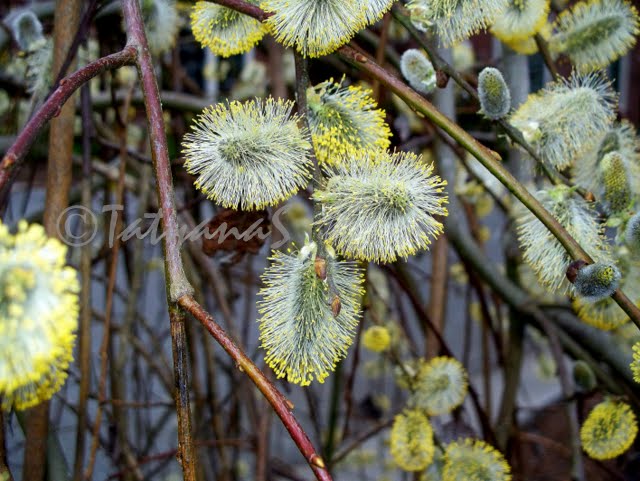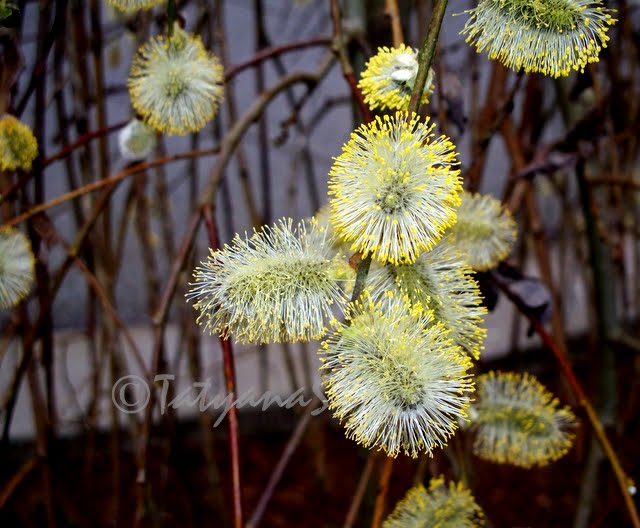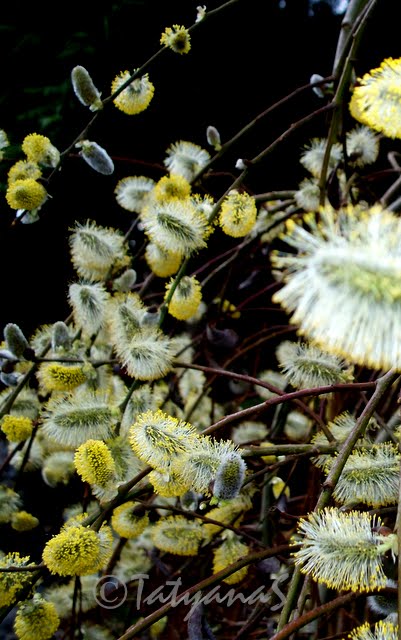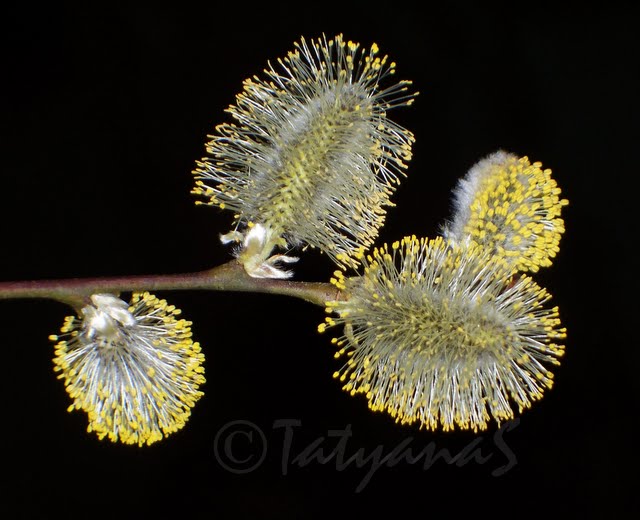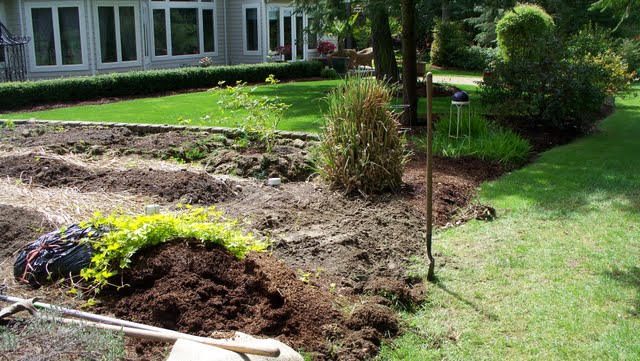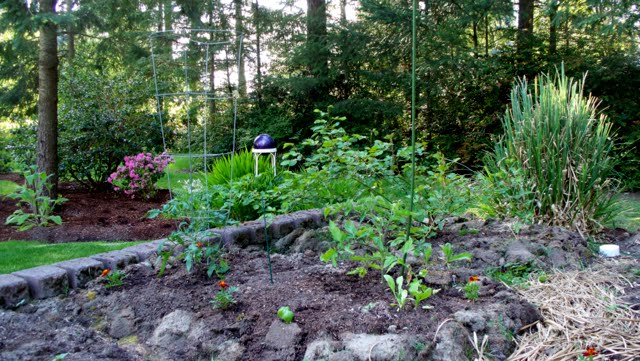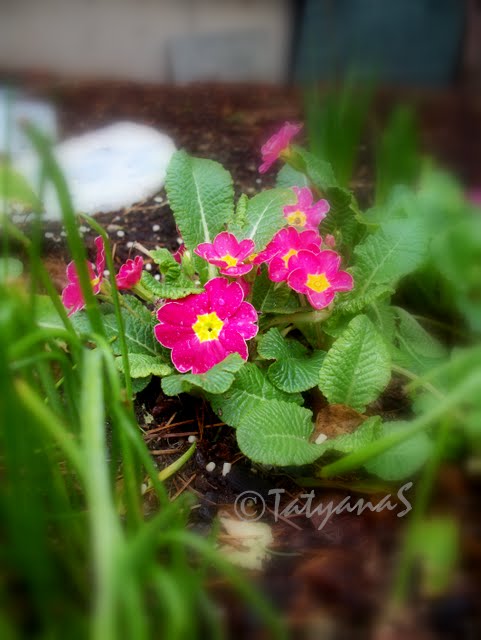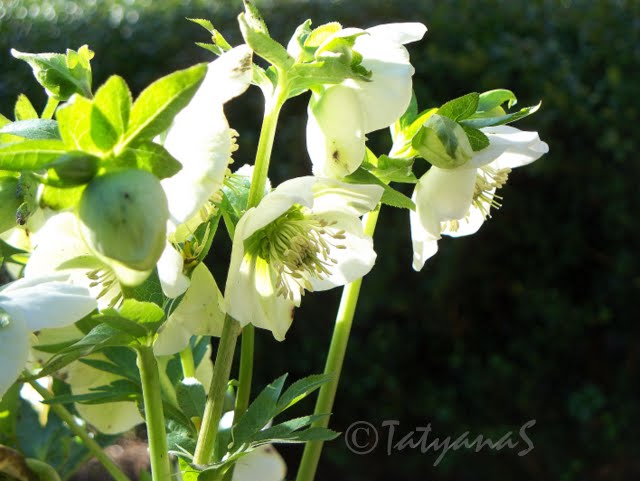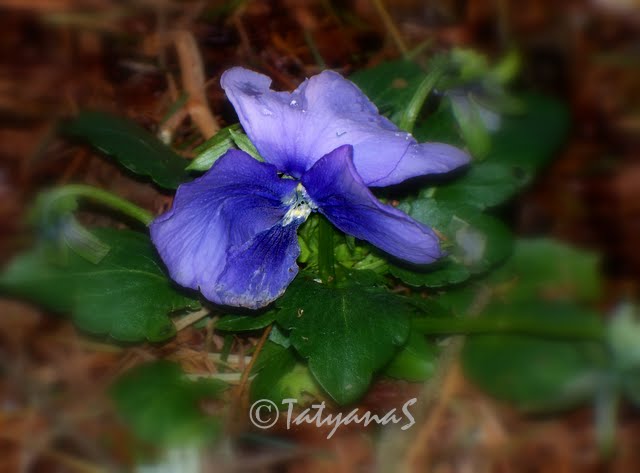Please, tell me that you love Gooseberries! Or at least that you know what a Gooseberry is! Is it true that many Americans don't know this plant? If to believe what the Raintree nursery catalog says, gooseberries which are highly prized in Europe, "have been sadly neglected in America, probably because most people remember gooseberries as tart and mouth puckering".
Gooseberry standard Poorman is one of the first plants I acquired for my garden. My childhood gardens always had gooseberries. The thorny old plants never failed to give us sweet berries to enjoy fresh and as a jam. Raintree Nursery, where I bought my plant, describes Poorman gooseberry as "a highly flavored, sweet table variety which can be eaten out of hand. The berries are green but turn red when ripe. Considered by many to be the best American gooseberry".
*
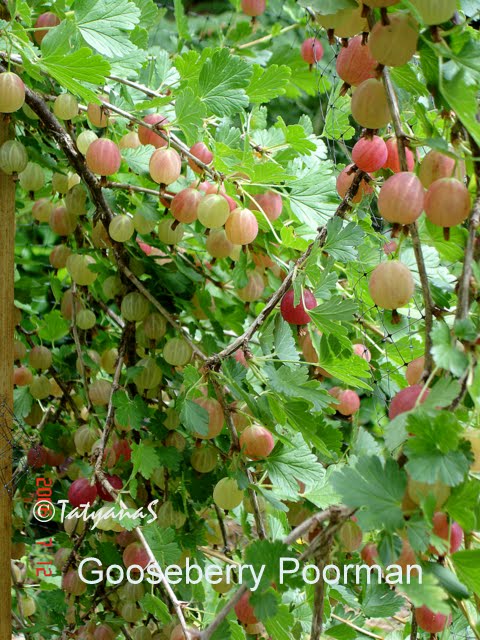
*
I chose a standard, i.e. a plant trained to resemble a small tree. I preferred it to a bush type because it takes smaller space, is easier to weed around, and is easier to pick up the berries and also because I like how it looks.
My plant reduced productivity significantly during the last several years. I neglected this poor man which grows in the far corner of the garden. The place is sunny but requires constant clearing of salal and blackberries which try to fill the space around it. Our Homeowners Association requires keeping green boundaries between the lots, so I can't just remove all the greenery around my gooseberry plant. So, regular control of the spreading salal and blackberries is needed.
In the picture below, the plant I am talking about is behind the bean tower. It blends with the surrounding salal and blackberries.
*

*
Another reason for its declining productivity is my failure to prune the plant.
The plant became tangled and unhealthy without regular pruning.
I also didn't provide regular watering which is critical for light, sandy soil.
This January, while the plant was dormant, I removed dead, damaged and crossing branches and also shaped the crown. I tried to keep the center open for light and ventilation. Several main branches, well-spaded, were left. Following the plant growing directions, I cut back to the young shoots and pruned the arching stems to upright sideshoots. Shortening new growth by half and removing lower side growth gave my plant its original tree-like appearance.
If these measures won't help and the plant won't give us a decent amount of berries in the near future, I'll replace it.
I hope for the best, although, because gooseberries are long-living plants, I don't want to lose my well-established plant.
I didn't have an intention to propagate my gooseberry, but the plant did it itself. I think it realized that with such a lousy caretaker as me, it needed to take care of itself.
So, the roots formed where the stem got covered with soil. I was able to separate a small plant. It's sitting in a container so far, waiting for when I prepare a spot for it. They say that with proper care, goosberries can be grown in containers. I might try it since there is not much space available.
It was useful for me to refresh my memory and find information about what a gooseberry likes and doesn't like. I think I'll write it down for future reference:
- Gooseberries like cool, well-drained and fertile soils. Heavier soils can be actually better for them, since they retain more moisture and keep cool. My soil is not heavy at all. It is sandy with lots of rocks. I need to provide regular watering. Uneven watering can result in the fruit cracking.
- Shallow roots should be protected by organic mulch which will also keep the soil cool and moist. - Moderate need for nitrogen. I need to remember this, because I use well-rotten horse/chicken manure in my garden. Excessive amounts of nitrogen can promote mildew and other diseases.
- Exessive nitrogen can lead to a high requirement for potassium. Scorching of leaf margins is a sign of potassium deficiency. An annual dressing of a half-ounce of actual potassium per square yard is recommended to avoid potassium deficiency.
- A fairly high requirement for magnesium. Using dolomitic limestone, which adds magnesium as well as calcium, is recommended.
- To get bigger fruit, some sources recommend composting and frequent cultivation of the soil around the roots from the moment when fruit just appears.
*
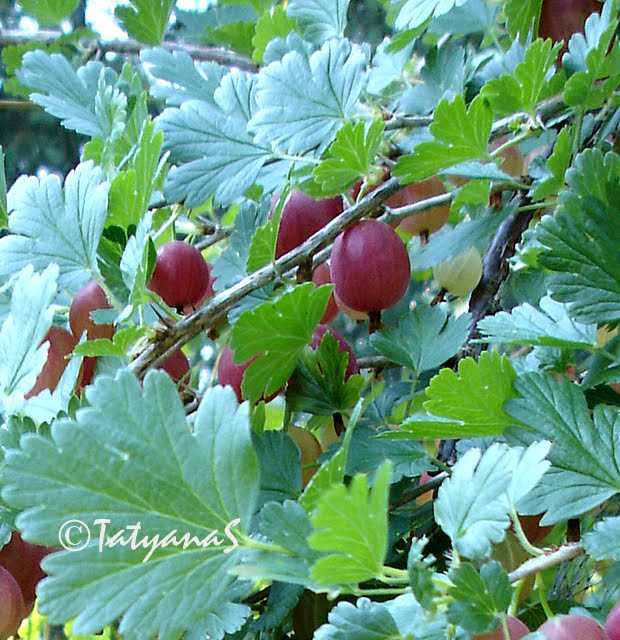
*
Plant information:
TYPE: Hardy deciduous shrub
SCIENTIFIC NAME: Ribes hirtellum (American)and Ribes grossularia (European).
ZONE / HARDINESS: Hardy to zone 3
MATURE PLANT SIZE: Up to 60 inches high
LIGHT: Full Sun (or partial shade in warmer summer areas)
SOIL TYPE: Well-drained, fertile soil. Soil acidity is not important as for other small fruits.
PESTS: Gooseberry fruitworm & currantworm
DISEASES: Leafspot & mildew
I should remember: Gooseberries bear fruit primarily on 2 and 3 year old wood, that is why equal numbers of 1, 2 and 3 year old shoots should be maintained to provide a renewal of fruiting branches.
***
EAT GOOSEBERRIES!
Vitamin C in gooseberries is not diminished by cooking! Wow!
Gooseberries consist of proteins, carbohydrates, vitamins (C and complex B), and 80% water.
Among the gooseberries' benefits are: anti-aging (due to its richness in vitamin C), eye care, diabetes control, hair loss control and even the prevention of heart disease.
***
Copyright 2010 TatyanaS




